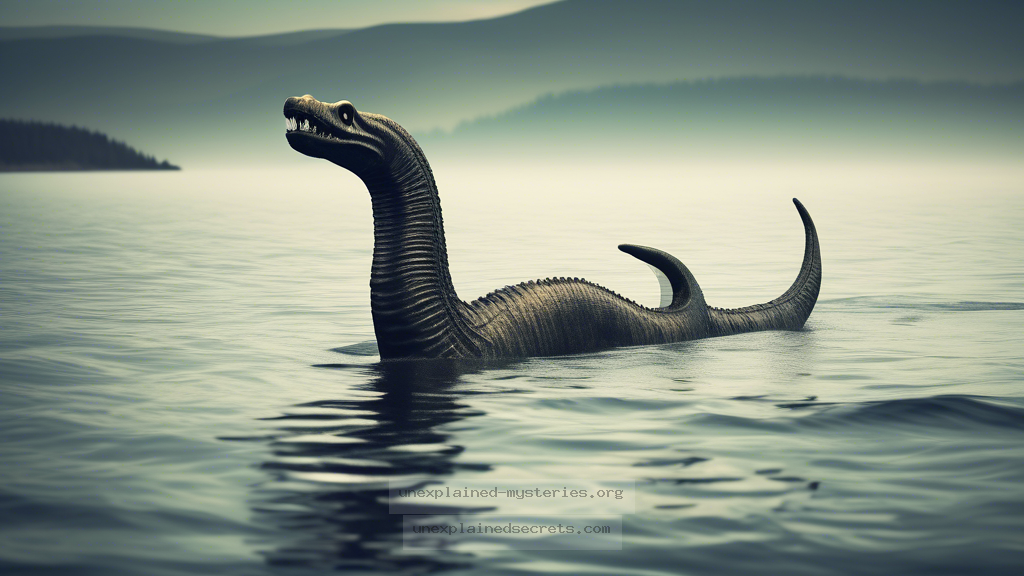What Secrets Do Recent Sonar Detections Reveal About the Loch Ness Monster?
What Secrets Do Recent Sonar Detections Reveal About the Loch Ness Monster?
The Loch Ness Monster is one of the most enduring mysteries of our time, captivating the imagination of enthusiasts, scientists, and skeptics alike. With its legendary status, the creature—affectionately known as “Nessie”—has sparked countless investigations, debates, and expeditions over the decades. But what if recent advancements in sonar technology could finally provide answers? This blog post delves into the recent sonar detections related to the Loch Ness Monster, exploring their implications and what they might reveal about this enigmatic creature.
Historical Context of Loch Ness and Its Monster
Loch Ness, situated in the Scottish Highlands, is the second-largest body of freshwater in Scotland. Its deep waters and murky depths provide an ideal setting for tales of mysterious creatures. The legend of the Loch Ness Monster dates back to the 6th century, with the earliest account attributed to Saint Columba, who reportedly encountered a “water beast” while traveling through the area. Over the centuries, numerous sightings have been reported, ranging from long, serpentine shapes to large humps surfacing above the water.
In the 20th century, the Loch Ness Monster gained significant media attention, particularly after the publication of the infamous “Surgeon’s Photo” in 1934, which purported to capture an image of Nessie. Although later revealed to be a hoax, it ignited a wave of interest and curiosity, leading to various scientific expeditions and public fascination. Despite extensive investigations, definitive evidence of the creature’s existence remains elusive, fueling ongoing debate and speculation.
Understanding Sonar Technology and Its Applications
Sonar, which stands for Sound Navigation and Ranging, is a technology that uses sound waves to detect and locate objects underwater. It operates by emitting sound pulses and measuring the time it takes for the echoes to return, providing valuable information about the size, shape, and location of submerged objects. Sonar technology has evolved significantly over the years, improving its sensitivity and accuracy.
In the context of Loch Ness, sonar technology has been employed in various expeditions to search for evidence of the Loch Ness Monster. One of the most notable recent attempts was the “Nessie 2020” project, where researchers utilized advanced sonar systems to scan the loch in unprecedented detail. This project marked a significant leap forward in the scientific investigation of the legend.
Recent Sonar Detections: The Evidence
In 2020, the “Nessie 2020” project made headlines when researchers claimed to have detected unusual sonar signatures in Loch Ness. The sonar scans revealed distinct shapes and anomalies in the water column, prompting speculation about their potential connection to the Loch Ness Monster. These shapes were not identifiable as known fish species or debris, raising the intriguing possibility that they could represent an undiscovered creature.
The sonar data captured during the project has since been analyzed, and several interpretations have emerged. Some researchers suggest that the detected shapes could be large fish, while others propose they might be a previously unknown species or even a remnant of a prehistoric creature. The lack of definitive identification has only deepened the mystery surrounding the loch.
Core Concepts and Theories Surrounding Nessie
Various theories have been proposed to explain the existence of the Loch Ness Monster. The most popular include:
- Survivor from Prehistoric Times: Some believe that Nessie could be a descendant of long-extinct creatures like the plesiosaur, which might have survived in the depths of Loch Ness.
- Misidentification: Many of the alleged sightings may be attributed to misidentifications of common wildlife, such as otters, seals, or large fish.
- Environmental Factors: The unique ecology of Loch Ness, including its depth and temperature variations, could create optical illusions or anomalies that lead to misconceptions about the presence of a creature.
Practical Implications of Sonar Findings
The sonar findings from projects like “Nessie 2020” carry significant implications for our understanding of Loch Ness and its ecosystem. By documenting the shapes detected in the sonar scans, researchers can further investigate the biodiversity of the loch and explore the ecological factors that may contribute to the phenomenon. Additionally, these findings can guide future expeditions and encourage more thorough scientific study.
Alternative Perspectives on the Loch Ness Monster
While many enthusiasts cling to the belief in the Loch Ness Monster, skeptics argue that the evidence supporting its existence is largely anecdotal and lacks scientific rigor. They suggest that the combination of folklore, sensationalism, and misinterpretation of natural phenomena accounts for the continued fascination with Nessie. Some skeptics also emphasize the importance of maintaining a scientific perspective, urging researchers to approach the topic with skepticism and critical thinking.
Furthermore, the rise of technology has led to a more informed public that demands solid evidence. The scientific community has responded by conducting more systematic studies and employing advanced technologies like sonar, cameras, and even environmental DNA sampling to search for signs of elusive creatures.
Common Misconceptions About Nessie
Despite its long history, the Loch Ness Monster is surrounded by numerous misconceptions. One prevalent myth is that every sighting must be genuine and representative of Nessie. In reality, many sightings have been debunked or explained by natural phenomena.
Another misconception is that Loch Ness is entirely unexplored. While its depths remain largely uncharted, various scientific studies have mapped significant portions of the loch. The idea that the entire loch is a mysterious void is misleading; rather, it is a complex ecosystem that has been studied more closely in recent years.
Best Practices for Investigating the Loch Ness Mystery
For those interested in investigating the Loch Ness phenomenon, a scientific approach is essential. Here are some best practices:
- Employ Advanced Technology: Utilizing sonar, underwater drones, and camera systems can enhance the potential for discoveries.
- Collaborate with Experts: Engaging with marine biologists, cryptozoologists, and environmental scientists can provide valuable insights.
- Document Findings: Thoroughly documenting data and observations can contribute to the ongoing research and understanding of Loch Ness.
Future Developments in Loch Ness Research
The future of Loch Ness research looks promising, with ongoing advancements in technology and methodology. Researchers are increasingly turning to environmental DNA (eDNA) sampling, a technique that analyzes water samples for genetic material shed by organisms. This method could potentially provide evidence of previously unknown species residing in the loch.
Moreover, continued public interest ensures that Loch Ness remains a focal point for scientific inquiry and exploration. As new technologies emerge, researchers will have more tools at their disposal to investigate the mysteries of Loch Ness and potentially uncover the truth behind the legend of the Loch Ness Monster.
Conclusion: The Enigma of the Loch Ness Monster Endures
The question of the Loch Ness Monster remains one of the most captivating mysteries in the realm of cryptozoology. Recent sonar detections have reignited interest in the legend, offering tantalizing glimpses into the depths of Loch Ness. While definitive evidence of Nessie’s existence remains elusive, the combination of historical accounts, scientific inquiry, and ongoing research ensures that the enigma will continue to fascinate people for generations to come.
As we delve deeper into the mystery, it is essential to maintain a balance between curiosity and skepticism, embracing the scientific method while respecting the lore that has captivated the world. Whether Nessie is a mythical creature or a product of imagination, the allure of Loch Ness endures, inviting us to explore its depths and uncover its secrets.
Other Articles
Recent Posts
- What Happened to Flight MH370? The Conspiracy Theories That Still Haunt Us
- What Secrets Lurk Within the Walls of the Infamous Trans-Allegheny Lunatic Asylum?
- What Evidence Supports the Existence of Bigfoot in the Pacific Northwest?
- What Happened to the Indus Valley Civilization? Unraveling the Mysteries of Ancient Urban Life
- Can Telepathy Be Scientifically Proven Through Laboratory Evidence?







